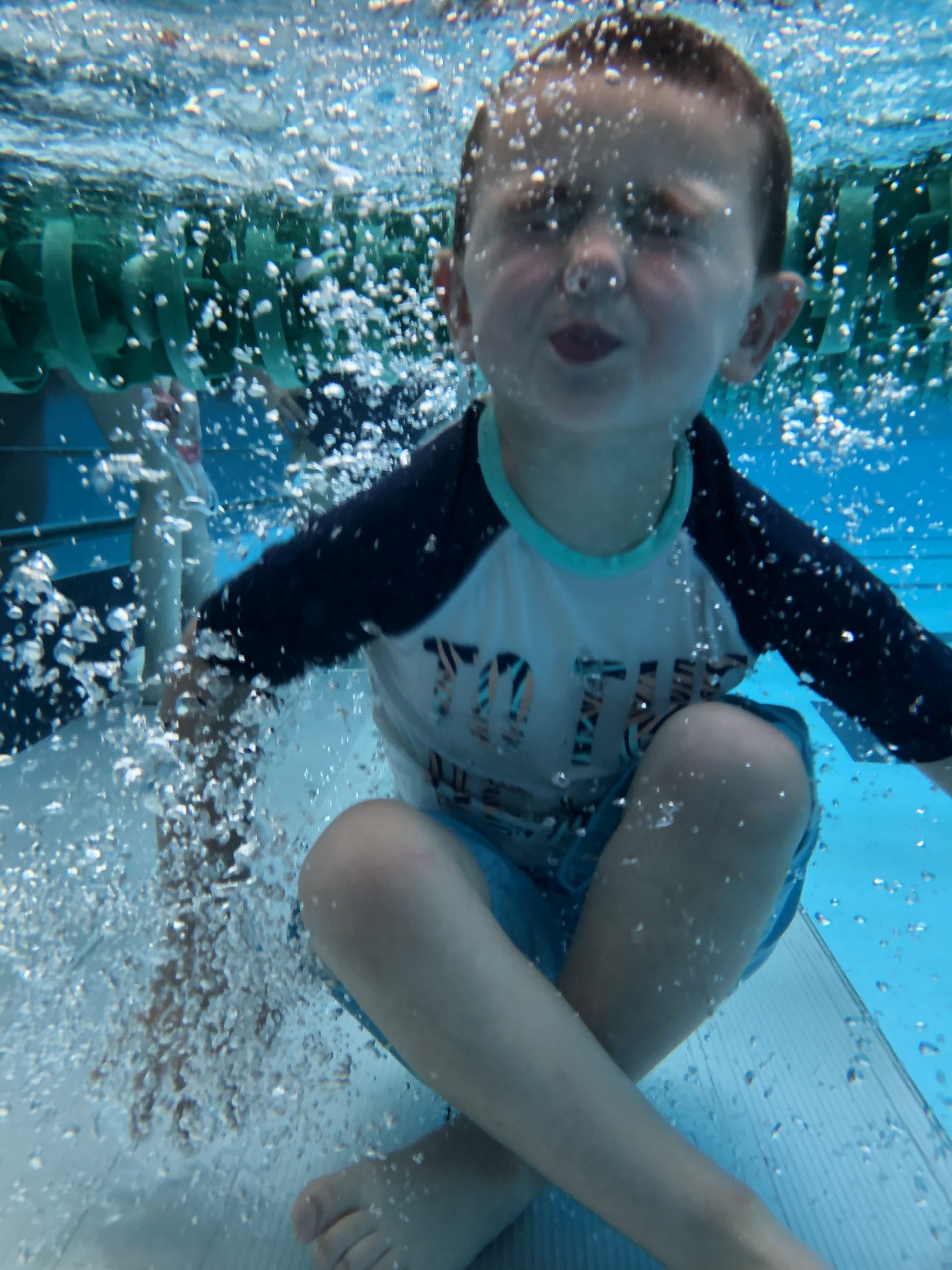
Safety Note: Do not let the learning swimmer hyperventilate or have breath-holding contests. Limit learners to a single inhalation whenever you ask them to hold their breath or submerge.
All submersions must be voluntary on the part of the learning swimmer. Crying, sputtering, coughing, choking, or vomiting are signs that a learning swimmer is not ready. Each swimmer’s readiness to try submersion is different. Don’t worry if they are behind others, they’ll get there with time and encouragement. Forcing a learning swimmer to perform a skill they are not ready for only delays their readiness to try additional skills. It can take some time and practice before a new or fearful swimmer is ready to submerge underwater.
Around nine to twelve months of age a child may be ready to learn how to blow bubbles. This skill is a good starting point for learning swimmers of all ages to become comfortable with submersion. Bubbles may seem like child’s play, but they are an integral part of learning to swim. Even Olympic swimmers blow bubbles when they are swimming!
Start with teaching them how to blow bubbles out of their mouth. This will help them learn how avoid swallowing or choking on the water. Then move on to nose bubbles which help to prevent “nose burn,” when water gets snorted into the sinuses.
To blow mouth bubbles:
• With their chin just touching the surface of the water, instruct them to inhale and exhale slowly from the mouth (making a sound sometimes helps get the idea across)
• Have them tilt their head forward until their mouth is submerged continuing to exhale or make sound (you’ll know if they are because there will be bubbles!)
• Have them tilt their head back until their mouth is above water while still exhaling or making sound
• Instruct them to catch their breath and repeat.
To blow nose bubbles:
• With their chin just touching the surface of the water, instruct them to inhale and exhale slowly from the nose (humming with lips sealed sometimes helps get the idea across)
• Have them tilt their head forward until their mouth and nose is submerged continuing to exhale or hum (you’ll know if they are because there will be bubbles!)
• Have them tilt their head back until their nose and mouth is above water while still exhaling or humming
• Instruct them to catch their breath and repeat.
To help make learning bubble blowing fun, you can use a lightweight toy or object for the learning swimmer to blow around the surface of the water, demonstrate holding your breath and blowing gently on their cheek or hand, pretend to blow their nose in a “tissue,” practice with a straw, pretend your fingers are candles and blow them out, scoop water into your hands and have them blow it out.
The next step is submerging their eyes. Eyes can be open or closed for this skill. Have the learner stand in chest-deep water or hold the wall if they are more comfortable that way. Start with the steps listed above for blowing bubbles. Before the step where they tilt their heads away from the water, instead have them tilt their faces closer to the water until they get their eyes in. Although you should not teach a learning swimmer to hold their nose, it is ok if they do so for now. Gradually discourage them from holding their nose by reminding them how to blow nose bubbles and remind them that blowing nose bubbles makes holding their nose unnecessary.
Finally, the learning swimmer is ready to practice getting comfortable opening their eyes in the water. Use brightly colored toys and ask them to put their face in and tell you what color the toy is or how many they are. Once they are comfortable with this they are ready to explore underwater and maybe even retrieve submerged objects like diving sticks or rings.
The thing about goggles – Goggles are great! They make it easy to see underwater without the blurry unfocused vision we get without them or the possible irritation. What we don’t want is for learning swimmers to become dependent on them. So, if goggles (with or without the nose piece) help boost your swimmers confidence in the beginning, go with it. As they become more comfortable and confident in the water they can gradually progress to submerging without equipment.
Read more about this topic in next week’s article, Bobbing and Breath Control!
